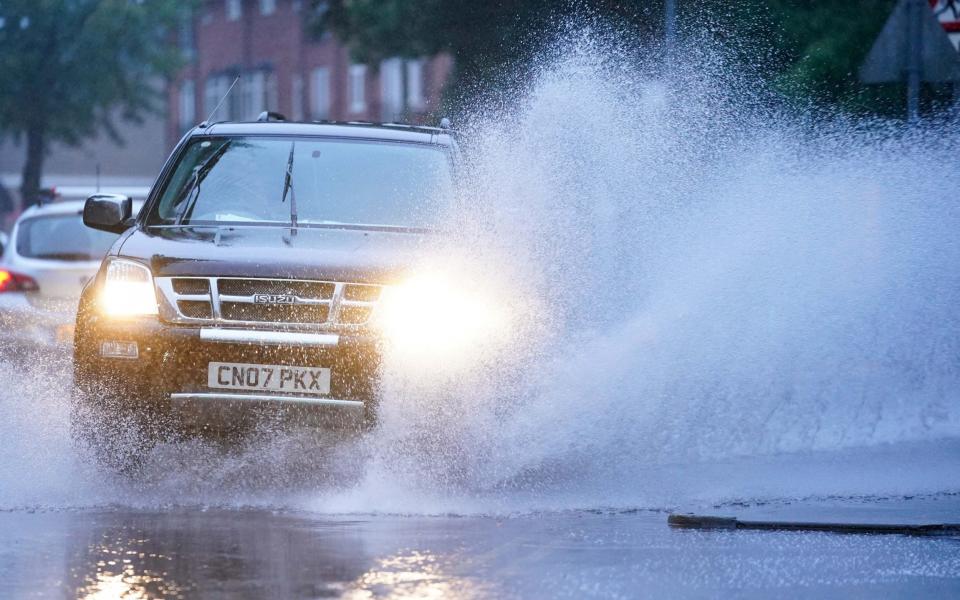Hands-free driving risks being derailed by British weather

Britain’s wet weather could pour cold water on ministers’ plans to bring hands-free driving to UK roads, a study has found.
Cars with automated lane assistance technology, which use cameras to keep cars in-lane while driving on motorways without the input of a driver, were found to stray off course in rainy conditions.
The American Automobile Association (AAA) tested several leading cars with lane detection and automatic braking systems, and found their performance degraded sharply in wet weather.
The Department for Transport (DfT) is currently consulting on whether to allow the use of more advanced lane-assist systems in the UK, which will allow drivers to use the technology hands-free at speeds of up to 37 miles per hour.
While drivers, will be allowed to let go of the wheel, they are expected to remain alert and be able to take control again within 10 seconds. The Government hopes to allow them before the end of the year.
The DfT declined to comment.
The US group found that vehicles strayed outside of the white lines 69pc of the time when they were subjected to downpours. The AAA fitted cars with a system that simulated rain by spraying the car’s windshields with a steady flow of water. This did not impact the breaking performance of the tyres, but did reduce visibility.
Typical automatic lane guidance systems are made up of a single camera located behind the windshield, meaning the rainfall severely impacted the cars ability to stay in lane.
The AAA said many car manufacturers were only evaluating their systems in ideal weather conditions and that “testing standards must incorporate real-world conditions that drivers normally encounter”.
Greg Brannon, the AAA’s director of automotive engineering said: “Vehicle safety systems rely on sensors and cameras to see road markings, other cars, pedestrians and roadway obstacles. So naturally, they are more vulnerable to environmental factors like rain.
“The reality is people aren’t always driving around in perfect, sunny weather so we must expand testing and take into consideration things people actually contend with in their day-to-day driving.”
The report also found that cars equipped with similar automatic braking systems collided with a parked car 33pc of the time when travelling at 35 miles per hour.
Human error accounts for 85pc of all road accidents, with advocates of driverless cars arguing computers will ultimately be able to create safer roads than human drivers.
While some cars are already equipped with limited lane assistance technology, more advanced driverless cars will have far more complex systems than basic automatic braking or lane guidance, although they too have also been developed in ideal road conditions.
America’s wide roads are viewed as easier for cars to learn to drive on, compared to Britain’s winding country roads, narrow city streets and inclement weather.
Mr Brannon, of the AAA, said the group believed automated systems had the “ability to lessen the chance of a crash and improve the overall safety of driving”, but added they needed “fine-tuning”.
The group performed tests on systems from Hyundai, Buick, Toyota and Volkswagen.
Separately in the US, Tesla has started deploying what it calls a “full self-driving system” to selected customers.

 Yahoo Finance
Yahoo Finance 